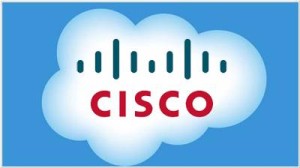Enjoy this quiz hitting a variety of fun IP network topics from the Cisco CCNA certification area. Note that many of these topics also apply to a wide variety of certifications from a wide variety of vendors – including CompTIA A+ and Network+.
CCNA - IP Networks
Start
Congratulations - you have completed CCNA - IP Networks.
You scored %%SCORE%% out of %%TOTAL%%.
Your performance has been rated as %%RATING%%
Your answers are highlighted below.
Question 1 |
You are using Wireshark to analyze packets on your network and you note that there is a field visible called sequence number. From this, what can you determine?
A | The packet is using UDP |
B | The packet is destined for HTTP |
C | The packet is using TCP |
D | The packet is destined for FTP |
Question 1 Explanation:
The presence of a sequence number would indicate TCP is in use as opposed to the connectionless UDP. There is not enough information here to indicate the destination of the traffic.
Question 2 |
You have a Cisco switch in its default configuration. The switch connects to four workstations and one other Cisco switch. How many collision domains are on this device?
A | 0 |
B | 1 |
C | 4 |
D | 5 |
E | 6 |
Question 2 Explanation:
There is a collision domain for each port in use.
Question 3 |
You are performing a Wireshark packet capture and you notice the following address in use on your system – 224.0.1.1. What is this address type used for?
A | It is used to send traffic to a specific default gateway |
B | It is used to send traffic to all hosts |
C | It is used to send traffic to a specific receiver |
D | It is used to send traffic to the “closest” recipient |
E | It is used to send traffic to a group of receivers
|
Question 4 |
Which of the following are examples of physical layer devices in a network? (Choose 3)
A | Switch |
B | NIC |
C | Hub |
D | Ethernet cable |
E | Bridge |
F | Router |
Question 4 Explanation:
The switch and bridge are layer 2 devices while a router is a layer 3 device.
Question 5 |
Which of the following would be the preferred transport layer protocol for carrying Voice over IP (VoIP)?
A | LLQ |
B | UDP |
C | TCP |
D | HTTPS |
Question 5 Explanation:
VoIP uses the efficiency of the connectionless UDP.
Question 6 |
Which of the following is a private IPv4 address?
A | 172.1.1.1
|
B | 10.10.10.1 |
C | 196.192.1.1 |
D | 12.10.1.102 |
Question 6 Explanation:
The Class A range that was designated private is 10.X.X.X
Question 7 |
You have the IP address and mask of 192.168.1.102 255.255.255.224 on your host. What is the first usable IP address on your subnet?
A | 192.168.1.95 |
B | 192.168.1.94 |
C | 192.168.1.97 |
D | 192.168.1.65 |
E | 192.168.1.64 |
Question 7 Explanation:
This is the .96 subnet. The first usable is .97 and the last usable is .126.
Once you are finished, click the button below. Any items you have not completed will be marked incorrect.
Get Results
There are 7 questions to complete.
← |
List |
→ |
Return
Shaded items are complete.
| 1 | 2 | 3 | 4 | 5 |
| 6 | 7 | End |
Return
You have completed
questions
question
Your score is
Correct
Wrong
Partial-Credit
You have not finished your quiz. If you leave this page, your progress will be lost.
Correct Answer
You Selected
Not Attempted
Final Score on Quiz
Attempted Questions Correct
Attempted Questions Wrong
Questions Not Attempted
Total Questions on Quiz
Question Details
Results
Date
Score
Hint
Time allowed
minutes
seconds
Time used
Answer Choice(s) Selected
Question Text
All done
Need more practice!
Keep trying!
Not bad!
Good work!
Perfect!
Share this:
- Click to share on LinkedIn (Opens in new window)
- Click to share on Reddit (Opens in new window)
- Click to share on Twitter (Opens in new window)
- Click to share on Facebook (Opens in new window)
- Click to share on Pinterest (Opens in new window)
- Click to share on Tumblr (Opens in new window)
- Click to share on Telegram (Opens in new window)
- Click to share on WhatsApp (Opens in new window)
- Click to share on Pocket (Opens in new window)
- Click to print (Opens in new window)
- Click to email a link to a friend (Opens in new window)
